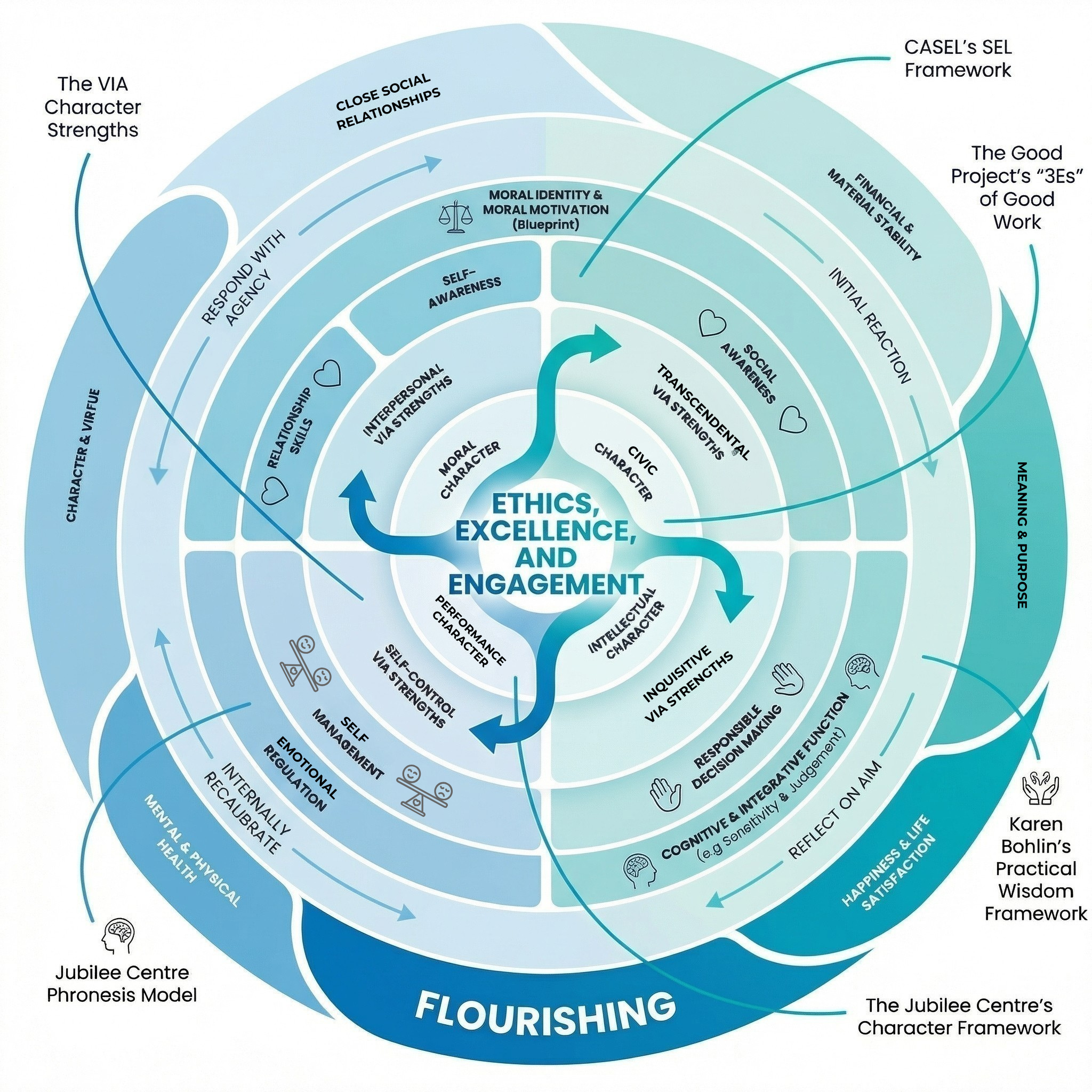By Daniel Mucinskas
Over the past several years, our colleagues Dr. Joan Miller and Dr. Mary Katherine Duncan (along with Dr. Jennifer Johnson) have been working on a set of Good Work-related endeavors at Bloomsburg University of Pennsylvania. We spoke with Joan and Mary Katherine about the latest news from their respective projects and their enduring commitment to encouraging “good” in the world. In the Q&A below, we discuss Bloomsburg University’s Good Work Initiative, a planned study of Good Work in nursing, a multiple intelligences curriculum for young people, and more!
Q: Mary Katherine, we previously discussed the Bloomsburg University Good Work Initiative, which strives to help students understand excellence, ethics, and engagement (the 3 Es) as pillars of doing academic work that is “good.” The Good Work-related summer assignment for all incoming students is now in its fifth year. What are you envisioning for this year’s assignment?
MK: Good Work is now embedded into the core of Bloomsburg University’s identity; many faculty members and administrators are excited by the Good Work frameworks and incorporate the ideas into their own classrooms, projects, and goals. We have a high degree of institutional support and are excited that we can offer a Good Work assignment to incoming freshmen once again this year. It is an important part of our community to have our students understand the meaning of doing good both at the university and beyond.
This year, incoming students will read a two-page introduction to the concept of Good Work and complete a brief quiz to check their understanding of the 3 Es. Then, students will watch a YouTube video of Randy Pausch’s The Last Lecture and write an analysis of factors that influenced Dr. Pausch’s pursuit of Good Work. Students will next reflect on factors that influenced their own pursuits of academic excellence, ethics, and engagement during their junior and senior years of high school. Finally, students will be directed to the BU Good Work Initiative website to learn more about campus-based resources designed to support their academic and professional Good Work.
Q: Joan, your major focus has been on the encouragement of Good Work in the nursing profession. What is the latest on that front?
Joan: I am planning an international qualitative study of Good Work in Nursing that I hope to start this year, using the same interview protocol that was used in the original Good Work study and also in my own previous study (see my article “Opportunities and Obstacles for Good Work in Nursing”). Through this new line of research, I hope to gain a cross-cultural perspective from several different countries concerning what values and beliefs brought people into the nursing profession, what opportunities/supports and obstacles they have, and how they overcome challenges.
Q: You have each been involved in a “Playing with MI (Multiple Intelligences) Smarts” curriculum that you have created to teach students about their intelligences and doing good. How has this been used?
MK: The curriculum was engendered by the Bloomsburg University Toy Library, a lending library of literacy and play resources that I founded in 2010 after Howard Gardner visited our school to talk about MI theory and the Good Project. The library has been popular with faculty, students, professionals, and paraprofessional working with individuals of all developmental ages and abilities. One of our central objectives for the Toy Library is to help people understand that everyone is “smart” in different ways, and we should each have the ability to appreciate our own smarts and those of others.
Using some of the toys, games, and resources from the library, we have worked with elementary school children in after-school care in what we call “Playing with MI Smarts,” facilitating an exploration of their unique intelligences and strengths through shared reading and play. We then have a discussion together with the children about how they can use their discovered abilities to help people in their communities. For example, students have made greeting cards and scrapbooks for children in foster care and handmade interactive children’s books for new and expectant mothers.
Joan: Playing with MI Smarts was also used with children of parents who were enrolled in “Getting Ahead in a Just-Gettin’-By World,” a program for individuals who are in or close to poverty. They explore personal and community resources available to help them break the poverty cycle. We really saw that the young people were engaged and happy to be participating in “Playing with MI Smarts.” Currently, we are exploring ways to integrate the “Getting Ahead” and “Playing with MI Smarts” programs into the local school system.
Over spring break, with students from the Bloomsburg University Honors Program, we took “Playing with MI Smarts” to two elementary schools in Jamaica. It was challenging to implement the lessons with large numbers of students in the Jamaican classes. Now we are thinking about how to adapt in the future to accommodate larger numbers of students.
Q: What other related activities can you share with us?
Joan: I recently returned from the University of Pécs in Hungary. I have been teaching a joint course with a professor from the University of Pécs. Together, we explore the 3 Es of Good Work and minds needed to navigate a global community. We anticipate continued collaboration. In the fall, I will give a guest lecture focused on Good Work and ways to cultivate respectful minds as the international students from the University of Pécs adapt to cross-cultural communication.
MK: Dr. Jennifer and I worked with a team of undergraduate students on a study examining motivators and challenges to psychology majors’ pursuits of excellent, ethical, and engaged academic work. Findings were presented at the Eastern Psychology Association Conference in March 2016.
I also still teach my annual Good Work seminar, structured around the 3 Es, to junior and senior psychology majors. As the Distinguished Professor of Good Work, thanks to the generosity of Joan and her husband Fred, I will continue to expand Good Work into other arenas












